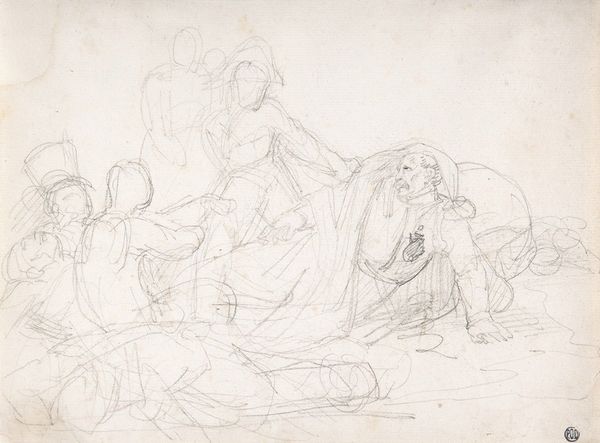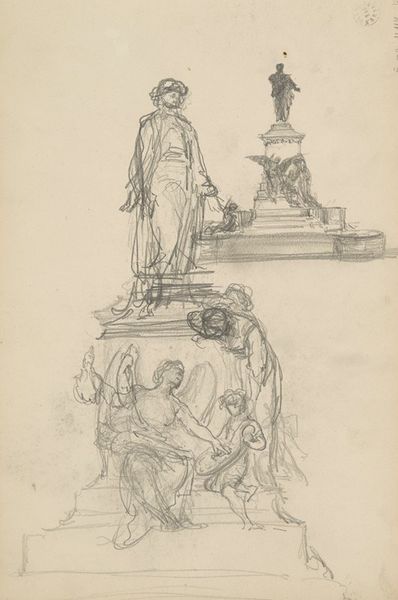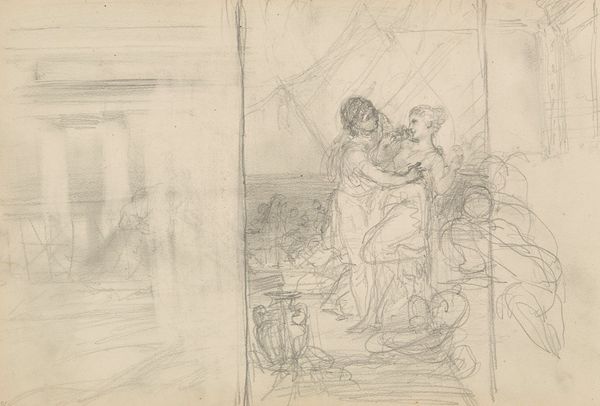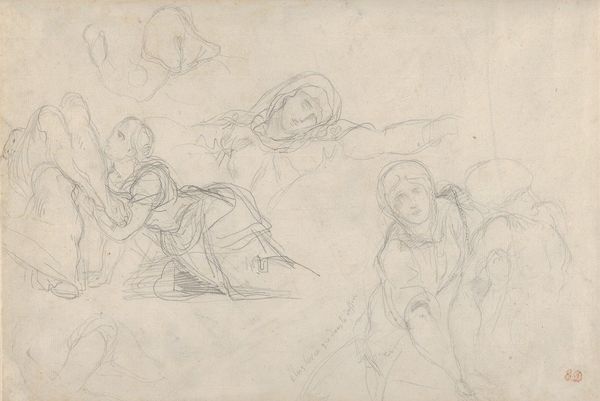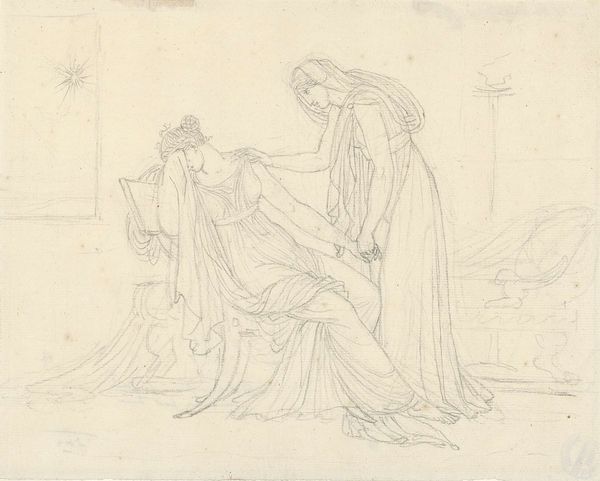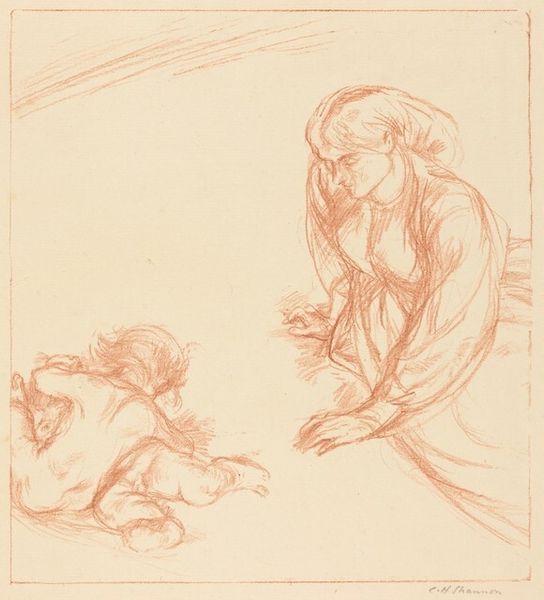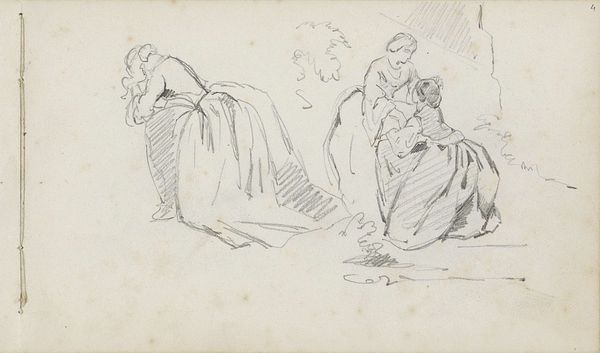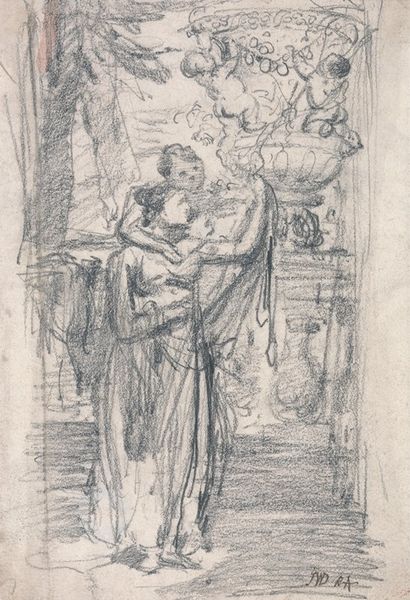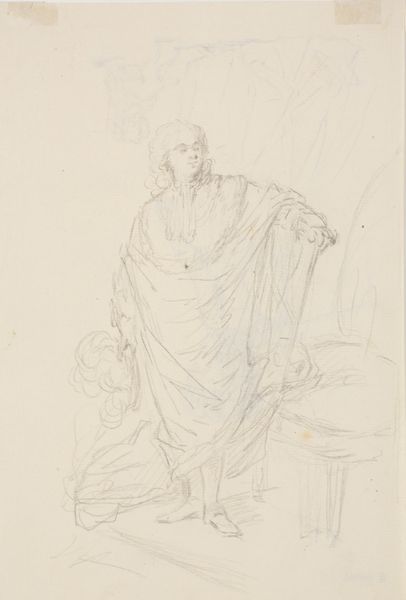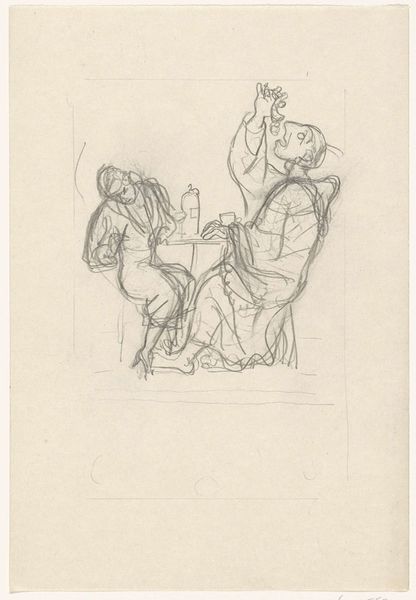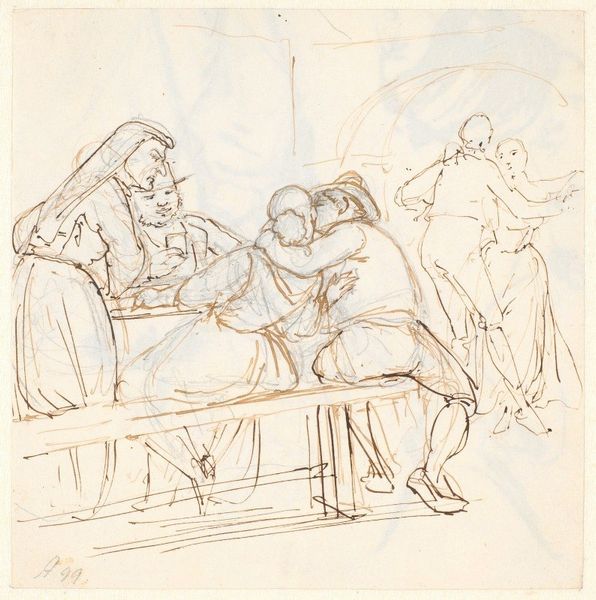
Copyright: Public Domain: Artvee
Curator: Józef Simmler created this drawing, "A woman with two children with a hand extended in a gesture of begging," in 1856, utilizing pencil on paper. It clearly depicts a scene of poverty. Editor: My first impression is of raw vulnerability. The sketchiness of the lines emphasizes the fragility of their situation. Look at the almost pleading gesture of the woman’s raised hand, and the huddled forms of the children! Curator: This drawing reflects the rise of Romanticism's interest in depicting social issues. Simmler engages with a visual language common in academic painting while focusing on the harsh realities of the mid-19th century. The woman’s plea for help echoes calls for social reform and challenges the viewer's conscience. It's intended to incite empathy, and perhaps even action, amongst the emerging bourgeois class. Editor: Exactly. Consider the materiality: it's pencil on paper. Accessible, readily available materials, nothing ostentatious here. The artist is making a clear choice to use a medium that feels immediate, less ‘precious’ than oil paint, emphasizing the urgency of the scene. Notice how the column on the right is elegantly rendered but feels almost mocking given the destitute figures on the left. Curator: It’s interesting how the artist places them adjacent to that architectural detail, a common backdrop in higher art— a sort of loaded staging for this family’s drama. But, crucially, Simmler places them outside the structures of power and wealth. He invites the audience to reflect on the structures of inequality shaping society. Editor: The unfinished quality actually heightens the sense of realism for me, almost as if he’s snatched a moment from the street before him, before it vanishes. One can feel the precariousness in the very lines he uses. It also speaks to the laborious process and time commitment such detailed, albeit spare, works demanded of artists at the time. Curator: Absolutely, it speaks to his training but also highlights his critical eye to his moment. Simmler offers a compelling indictment of societal inequalities while situating his work in established art traditions. Editor: In this piece, Simmler forces us to contemplate the physical hardship endured, prompting a closer examination of how everyday materials carry deep socio-political meaning. Curator: I'm struck by how he makes us confront not only the poverty but the broader societal structures that perpetuate it. Editor: For me, it is the unembellished quality of the material and the immediacy of the work itself that drives home the desperation of the figures depicted and, in doing so, it challenges any romanticized vision of the past.
Comments
No comments
Be the first to comment and join the conversation on the ultimate creative platform.
